fluorocarbon
Yo-Zuri Pro-Staff Brandon Cobb breaks down his Top 4 Finish at the BASS Elite Series event on Eufaula
• What was your plan coming into the tournament and did go as planned?
When it comes to tournament bass fishing you usually need to keep a completely open mind when going to a lake you are not familiar with. It is very hard to have a completely accurate theory on what the fish will be doing. With that being said, I knew this would be a primarily offshore tournament. So, I put all my eggs in one basket and devoted my entire practice to graphing for offshore fish. I found quite a few schools of fish and brush piles. The strange thing about the schools of bass at Lake Eufaula was their tendency to move. On most lakes I’m used to fishing offshore schools of fish they are always there; they just may not bite. On Eufaula, I had to idle the same spot 3-5 times a day and the fish would randomly be there at some point. I felt like I had a solid plan going into the tournament. After Idling for 30+ hours in the 3 days of practice I marked 9 schools of fish and nearly 100 brush piles. My plan in the tournament was to cover as much water as possible and make just a few casts to each key piece of structure.
• What was your pattern the first three days?
The fishing pressure during the tournament definitely repositioned the fish. Lake Eufaula had been highly pressured not just from our tournament but also the Toyota Series tournament the week before. The First two days of competition, I was able to rely heavily on the large offshore schools of bass I located. It was very challenging to get my timing and positioning right on these schools. I knew from practice the areas these fish would pull up on the ledges and feed but they would position differently every day. I had to idle with my Lowrance over every place to see where they were positioned at that exact moment.
I would mark the fish then be able to catch a few in a row before the school broke up and I had to find them again. Sometimes the ledge would have 5 fish and sometimes it would be 50+. It was just a timing thing. As the tournament progressed into days 3 and 4 the ledge fish became too pressured, so I shifted to more of a brush pile game. I would run as many brush piles as I could. The brush piles were solid fish but the bite was very slow. I usually only caught one or two fish before having to move to another pile.
• How did the weather change going into day 4 and how did that change your approach?
The final day of the tournament started very slowly for me. I fished many of my ledges and brush piles with limited success in the morning. However, around midday the weather the wind picked up somewhat to cause a little current to start moving through the lake. I decided to make a move back through the string of my most productive brush piles. The conditions had been basically calm for the past days. During the calm conditions I relied mostly on a more finesse approach with a worm and swimbait.
Worm setup
Reel: Abu Garcia STX Revo 7.3:1
Rod: Ark Rods Prototype Brandon Cobb Signature Rod 7’4″ MH
Line: 16 lb Top Knot Flouro
Bait: Zoom Mag U-Tale Redbug on a 1/2 oz shaky head
Swimbait Setup
Reel: Abu Garcia STX Revo 7.3:1
Rod: Ark Rods Prototype Brandon Cobb Signature Series 7’4″ MH
Line: 16 lb Top Knot Fluoro
Bait: 1/2 oz greenfish tackle swim jig white with 3.8in Zoom Z-Swim swimbait (white)
Once I noticed the wind causing some water disturbance, I picked up the Yo-Zuri 3DS DD crankbait. I caught 20 lbs in that particular bite window in just a few brush piles. The crankbait excels in conditions with wind, clouds, or current.
• What made you decide to use the 3DS Crank Deep Diver in particular? What are some of the advantages of this bait over other deep diving crank baits in that depth range?
The 3DS DD has always been one of my staple offshore crankbaits. It is not an extremely deep diving crankbait but perfect for that mid-depth 10-12 feet of water. Most of the brush I targeted was in that exact depth of water making it the perfect option. The bill design allows it to plow through the brush easily with minimum hang ups. Retrieve speed is really key to fishing brush piles with crankbaits at nearly every lake. You need to be able to quickly plow the crankbait through the limbs to trigger the fish. The 3DS DD allows you to not slow down when the bait hits the first limb. This triggered the bass they may have really not been feeding.
Crankbait Setup
Reel: Abu Garcia STX Revo 6.6:1
Rod: Ark Rods Prototype Brandon Cobb Signature Series 7’3″ M Fiberglass composite
Line: 12 lb Top Knot Fluoro
Bait: 3DS DD chart/blue (Available at https://www.tacklewarehouse.com/Yo-Zuri_3DS_Series_Deep_Diving_Crankbaits/descpage-YZ3DDC.html)
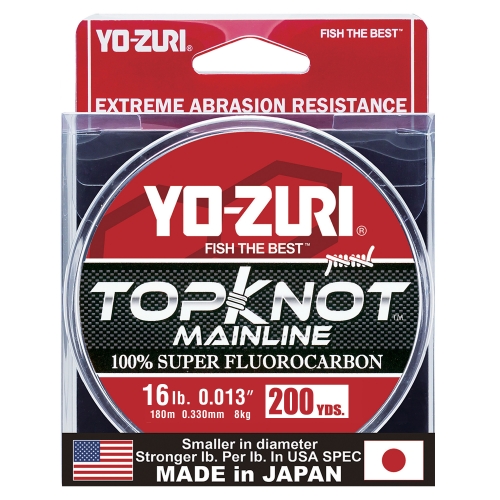
• This was the first tournament coming off pandemic. Was there a different feel to this tournament compared to the typical Elite series event?
It really felt like the first tournament of the season. It also felt like it had a “bigger” feel than a lot of the other tournaments. It was really one of the first major bass tournaments, or really any kind of professional event, back at it. The pressure was a little higher because I felt like it was a necessity to get the season back on track. During mid-season it can often become a grind going from one lake to the next with little down time, but with the break I was more excited than ever to get back to competition.
Breaking Down Ice Fishing for Beginners- by Will Nalley
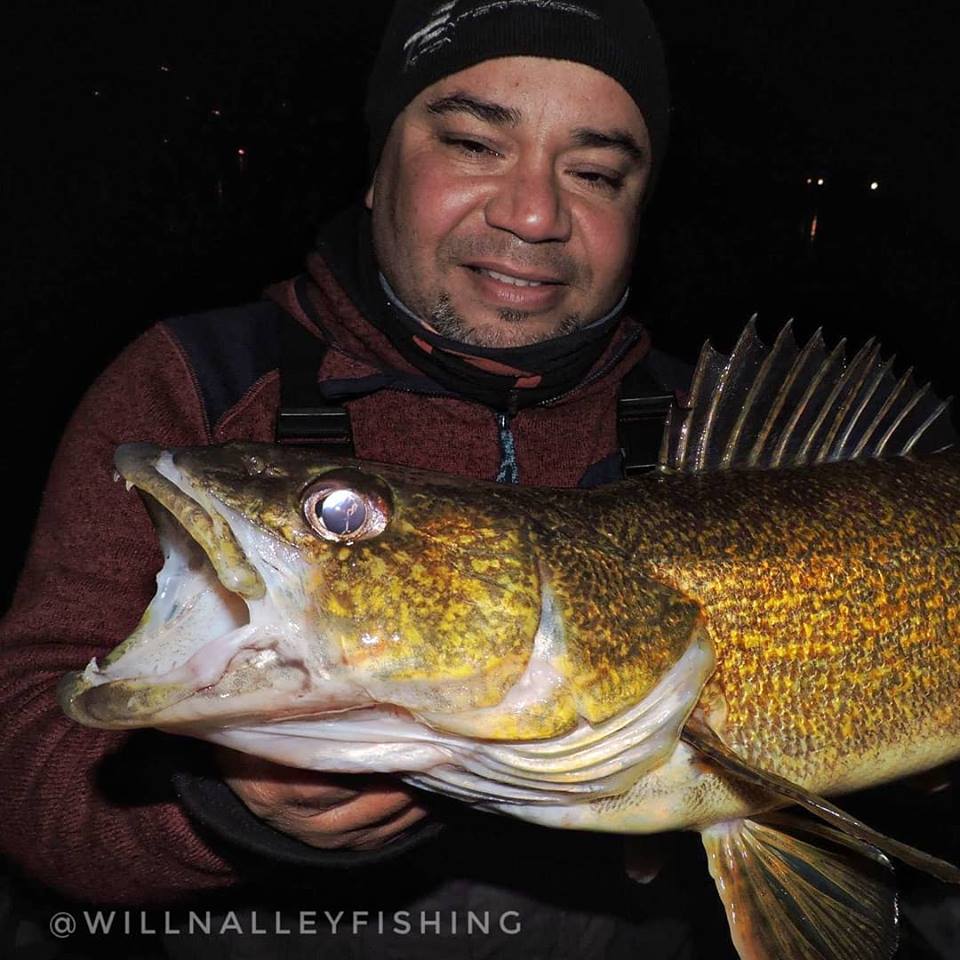 Safety:
Safety:
The first and foremost thing we need to talk about here is safety, and that is NEVER give the ice more credit than what it is due. Make sure to have crazy amounts of caution when fishing the ice, the last thing you want is to break through and risk hypothermia. That being stated, always remember the buddy system: ice fishing is not something I suggest anyone do alone. If you do go somewhere alone, make sure there are other people in the area and you tell people where you are going. It is always a good idea to wear flotation clothing just for ice anglers, or perhaps what I do and wear a life jacket. I know they are big and bulky, but its better safe than sorry. The suggested ice thickness that everyone I know abides by is 4” to walk on, 6” for an ATV or snowmobile, and 12” for vehicles. Always have a spud with you to check the ice thickness.
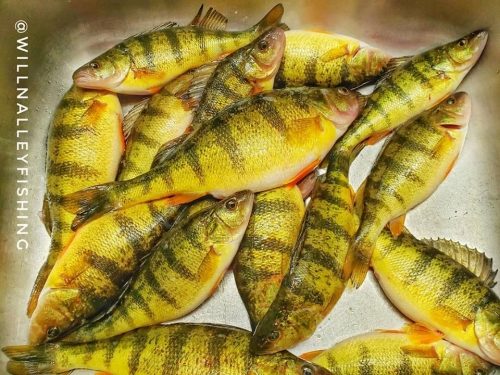
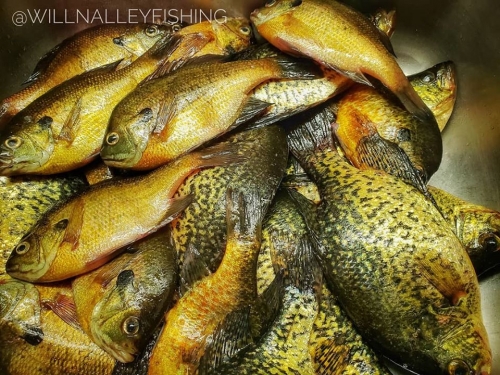
Species:
This is one of my favorite times of year to fish because the best eating fish can be caught. Those include the Panfish, Bluegills, Yellow Perch, Walleye, and Crappie. Yes, I know you will have to brave some crazy elements to make this happen; but it is well worth it when you can get on a good pile of them. This time of year; however, the fish have to eat to generate some sort of heat. So if you drill your hole around them and have a hardbait that is UV with rattles, it’s typically not hard to get them to bite.
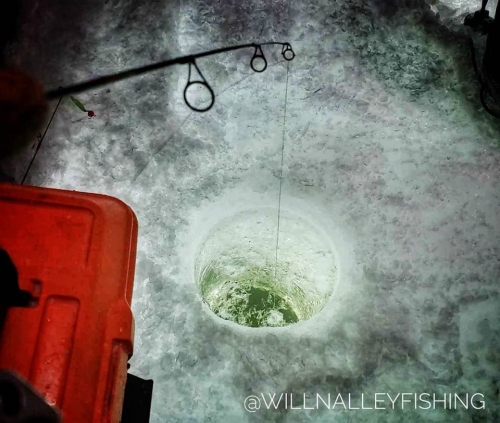
What to target:
This is where experience on the lake you are ice fishing really comes into play and so does a good depth finder and mapping system. I typically want to target some piece of structure and weed lines, and fishing the warmer months in open water is really the only way to find this. You can certainly find some solid weed lines and edges in 6-12 feet of water that are holding fish. This is because the chunk rocks in these areas hold healthier vegetation and heat, which the fish will relate to. Structure though, is where I find the better walleye and crappie. So it pays off to know the best areas of structure of transitions off flats.
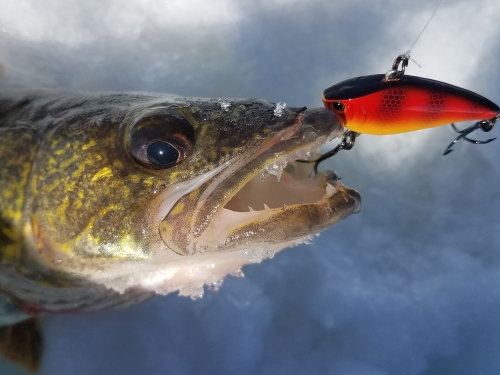
Weather conditions:
This is where it gets a little bit tricky to justify when the best times to go are, because it is always cold. As much as I hate to say it for the anglers that do not like the cold, the night time is the best time to get out there. The last few hours of daylight in the day into the dusk/night fall hours have always seemed to be the best for me. I believe this is because the moon and gravity force become less at night allowing the fish to move around a little easier in the cold conditions.
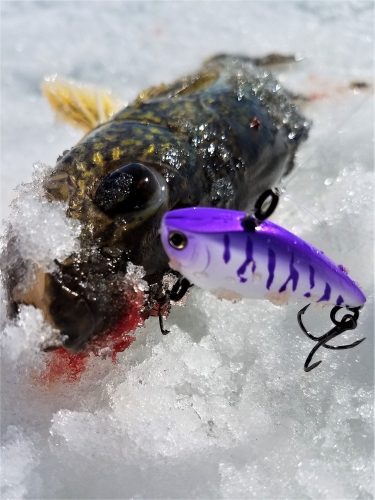
What to take with you:
Flasher/sounder/camera- a combo of a flasher and camera is pretty much all you need. I’ve found that an LCD display sonar is great for larger fish generally, as you have history on the screen which you lose when you use a flasher which provides real-time feedback on fish and lure location, but there is no history.
GPS – ideally you’ve done your homework ‘ground-truthing’ spots during open water with your boat – the GPS is also great for new spots, and finding your way to safety if you’re in whiteout condition.
Gas powered Drill with 24” bit- This is for drilling your hole to drop your flasher/ camera and fishing out of.
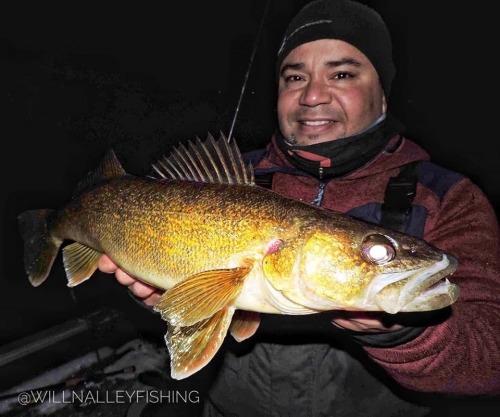
Biggest Mistakes by Beginners:
Panfish – line too thick, and lure size too big for the size of the presentation and the species target.
Larger predators – for walleyes – fishing the wrong times of the day or targeting them in water considered to be less than optimal in depth, there are always exceptions to the rule here if you have some history to go off of. Very common today for people to use a braid and fluorocarbon leader – often the fluorocarbon will be added to a swivel if you’re using a rotating presentation. Because of dropping strait down, this will create line twists. Braid can be problematic in very cold temps – if you’re in a hut, you’re in business. Larger fluorocarbon requires a larger size spool to manage the stiffness of the line.
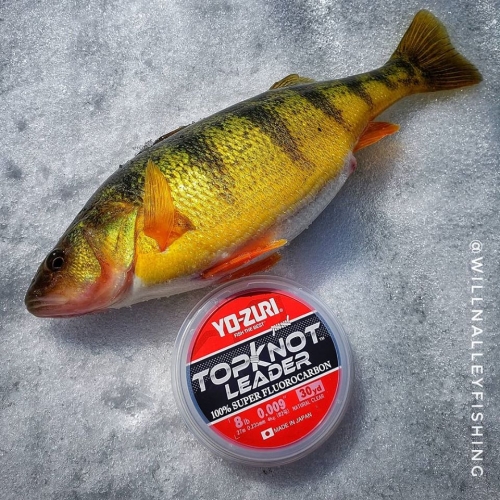
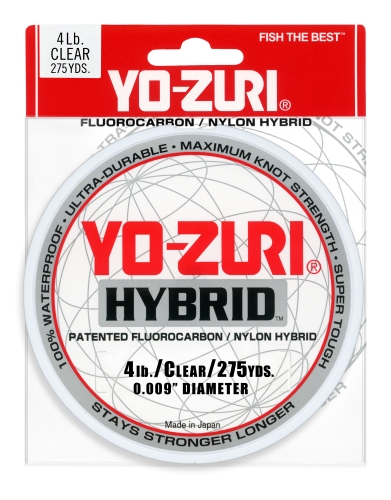
Yo-Zuri Product to Take:
-Hybrid line in 4lb test, this is definitely a style of fishing that you want the smallest diameter line you can get away with.
-8lb TopKnot Leader, this is something I like to use when fishing for bigger walleyes. I also think it helps the bait sink faster when I see a fish on my camera or flasher.
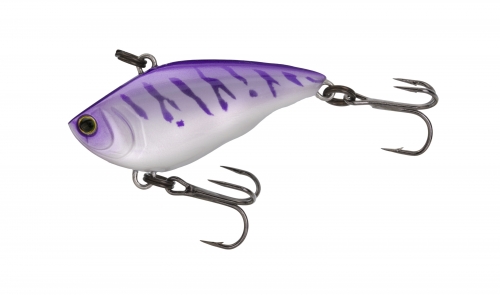
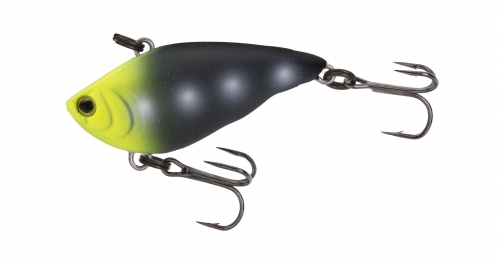
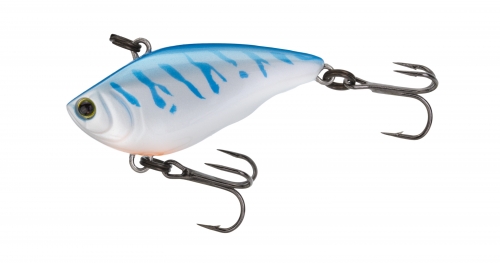
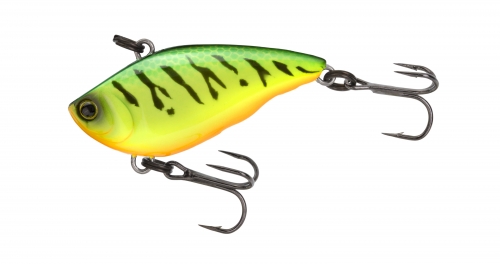
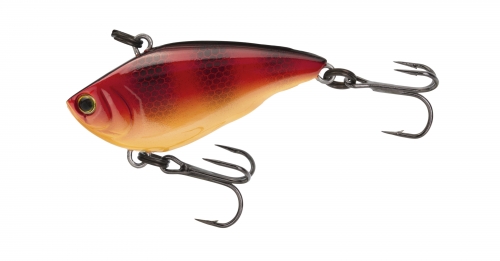
-NEW Rattl’N Vibe Mini, this is a bait designed specifically for ice fishing anglers. I definitely love the UV colors since I fish so much at night, but also my favorites are Firetiger, Gold with Black Back, and Hot Perch
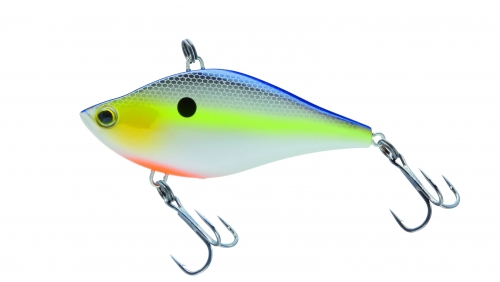
-3DS Vibe, this is a bait I catch a lot of bigger walleyes on and it seems to have a great falling action through the water column. Usually the fish eat this bait on the initial drop.
Weekends filled with Walleye in Canada!!! –André Gervais
Yo-Zuri hardbaits are the staple in every one of my tackle boxes. But, I especially rely on them when chasing after the big walleyes that we are notorious for in Canada. I really enjoy walleye fishing on the weekend because there are no two trips the same, and the walleye are very aggressive fish. It is always a great opportunity to hit the water and spend time with great fishing buddies and family.
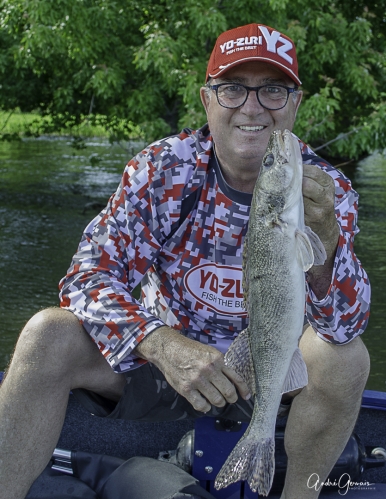
For most of my life I have known the best way to catch walleye is by trolling. This is a pretty simple technique done by boat: tie on a Yo-Zuri Crystal Minnow Walleye DD, throw the bait behind the boat and drive at a steady slow pace. A critical element to being successful and a common question I hear a lot is, “what speed should I troll at?” this is dependent on the bait you are throwing and the depths you want to target. For me I prefer a really slow speed to help the Yo-Zuri Crystal Minnow Walleye DD dive to a depth of 8-9 feet. This seems to be a perfect depth for this bait because it allows the bait to “dance”. When I say dance, I mean the bait is at a wide side-to-side wobbling action and is hunting!
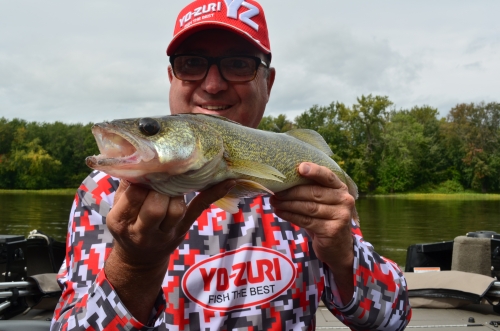
The rod and reel is really not too much of a concern to me, but I have found that line is very important; remember you are dealing with tooth critters. For me if I am fishing open water I will run straight 14-20lb Yo-Zuri TopKnot Mainline 100% Fluorocarbon. The small the line the deeper depths the bait will go. However, if I am targeting areas that have a lot grass or I am running multiple rods behind the boat I will usually run 30lb Green SuperBraid with fluorocarbon leaders. The braid helps stay more abrasion resistant in the grass.
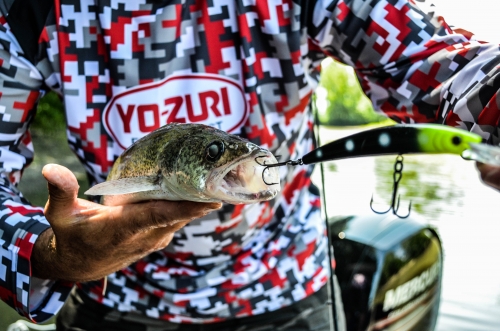
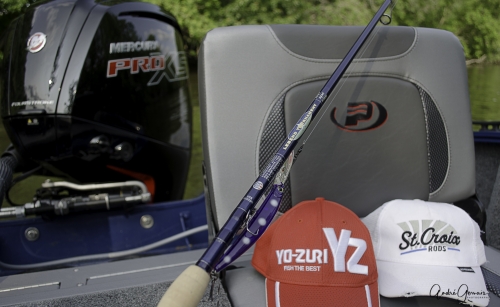
Finally the bait of choice, as I mentioned I throw the Yo-Zuri Crystal Minnow Walleye DD most of the time. This is a great bait because it dives really well, has a great action, and the colors are exactly what walleye target. Walleye prefer the really dark or the really bright colors. They are a weird fish when it comes to the color selection and resemble nothing of the natural forage. The colors I like the most are Zombie and Midnight, but will sometimes mix it up with Acid Perch and Hot Tiger. All of the colors offered by Yo-Zuri however are a great choice; these are just the ones I reach for most.
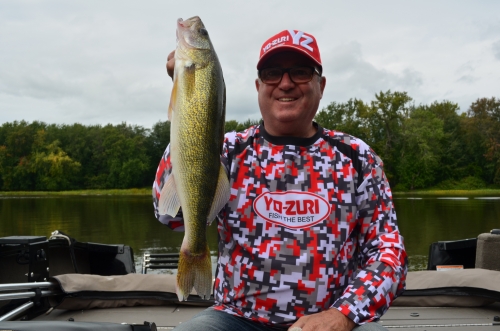
Enjoy the waters and don’t forget to bring home fresh walleye for dinner, as walleye are one of the best freshwater eating fish there is!
Chasin the Wester Stripers- by Joseph Tutelian
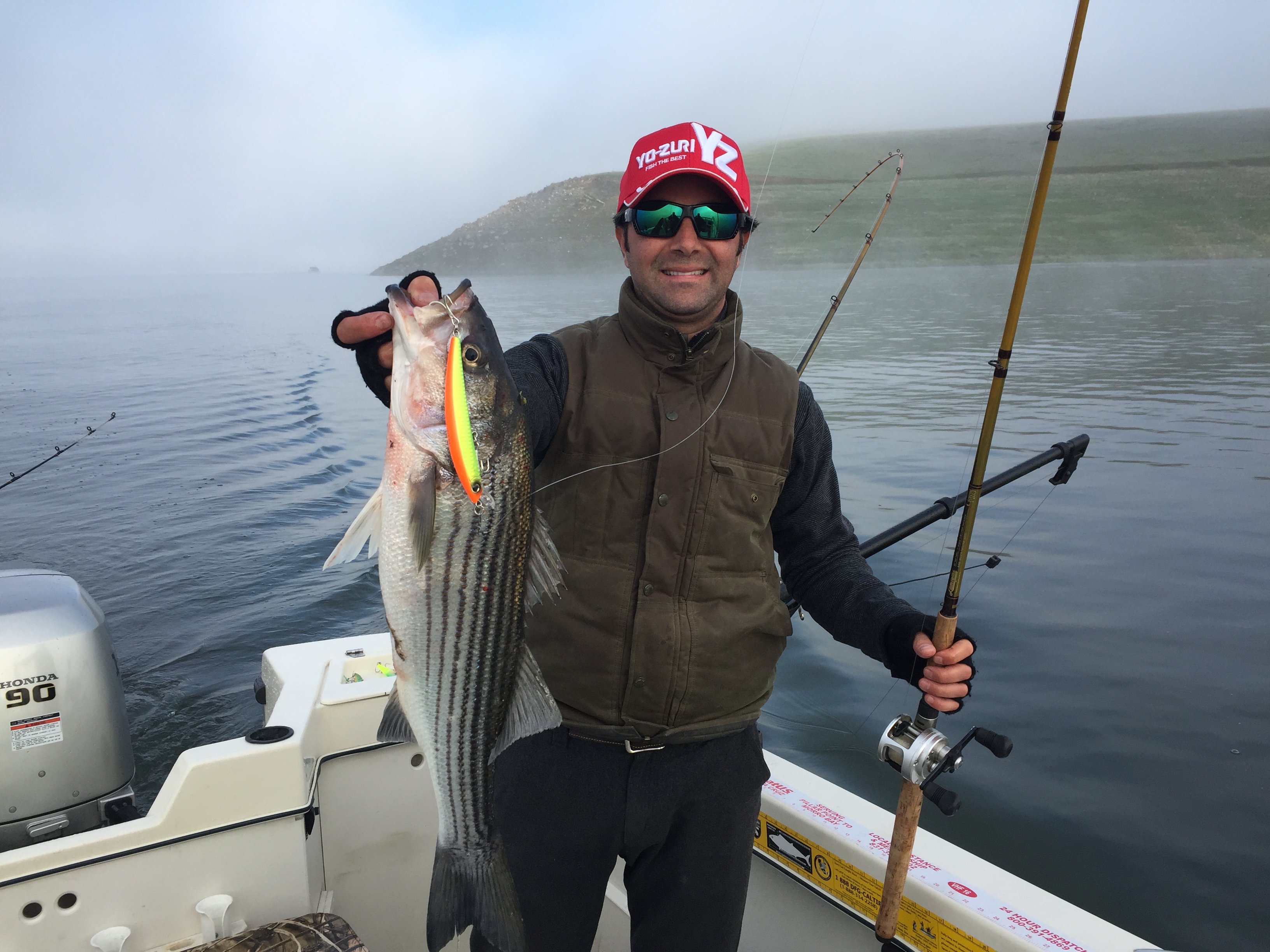
Rod: Cousins casting rod (SSW 79M-T) 7’9, 12-20 lb, extra fast tip; and Lamiglas Mark Wilson Striper Trolling rod (XCC 795) 7’9, 12-25 lb.
Reel: Diawa reel with a line counter when fishing with multiple people this helps coordinate each others distances behind the boat.
Fishing Line and Hardware: Yo-Zuri TopKnot Mainline fluorocarbon in 20lb test with a Owner 79 lb Hyper Crosslock Snap (a snap-swivel will rob the lure of its action)
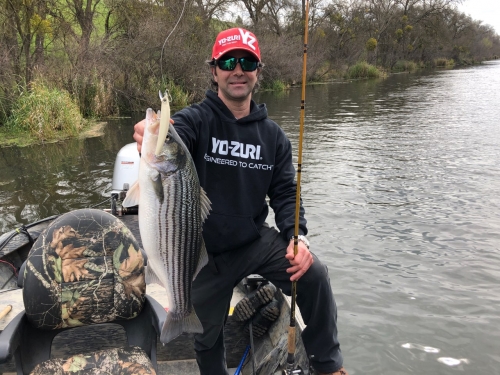
Lures: Yo-Zuri Crystal Minnow 5 1/4″ in bone white, pink, chartreuse, blue, and others. This lure has a very tight fast wiggle and dives a few feet deeper than the Yo-Zuri Hydro Minnow LC. The Hydro LC is just as effective as the Crystal Minnow, however I use the Hydro LC when trolling in shallower water because it dives from 3-6 feet deep depending on how far behind the boat you are trolling it (130 ft versus 200 ft.) The Hydro LC also has a larger profile than the Crystal Minnow; I like to downsize the lure when the bite is tough. In the Crystal Minnow I prefer the colors: Bone, Florescent Pink, and Chartreuse. The Hydro Minnow LC I always have the best luck on Bone or Purple Black.
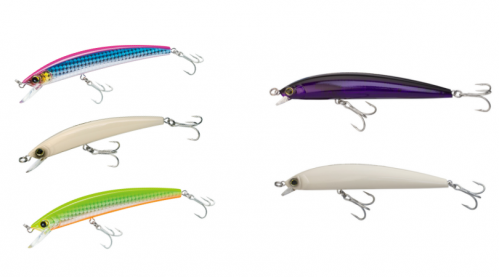
Fishing Technique/Application: Water in the river ranges from 48 degrees (winter/early spring) to 62 degrees (summer/fall, or further downriver). When I am fishing all of the above listed lures, I am trolling them upriver or downriver at speeds ranging from 2.5-3.5 mph, with my lure approximately 120-200 ft behind the boat depending on the depth of the hole I am trolling. Depending on what depth in the water column I am trying to fish, I will let out less line (i.e. 120 feet) to achieve a shallower depth, and more line (i.e. 200 feet) to achieve a deeper depth. Remember, you can also fish shallower or deeper in the water column by changing from the Crystal Minnow to the Hydro Minnow to the LC Minnow.
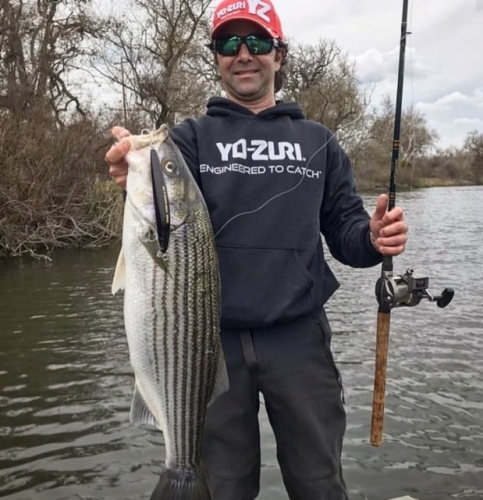
Another cool tip to note; to trigger reaction bites is to make the lures swim up or down in the water column by increasing or decreasing your troll speed. When using any floating lure, you can get it to swim down (or dive) by increasing your speed, and also get it to swim up by slowing down your troll speed. Sometimes doing this or trolling in a Z-pattern can trigger bites!!!
Walleye Season 2019 is FINALLY Here!!! by Marc Tremblay
This week marks the start of the 2019 Walleye season up north and we checked in with Yo-Zuri Prostaff angler Marc Tremblay in how he attacks early season.
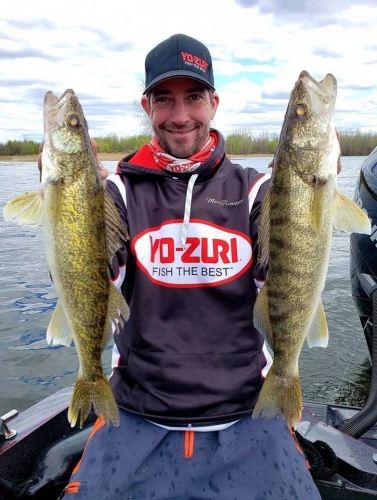
Primary Technique: Yo-Zuri Crystal Minnow Walleye DD
Marc always starts with when early season walleye fishing is trolling a Yo-Zuri Crystal Minnow Walleye Deep Diver in a shallow area (rock structure-weed line-edge of pool)

“I try to put the bait very close to the bottom. The fish are often relating to a rocky bottom because the the most heat will be held here. Typically if I am not hitting the bottom then I am not in good position to get bit”, says Marc.
The trolling speed in cold water is around 0.8 and 1.2mph, this allows the Crystal Minnow Walleye DD to have great action while not being too fast. The walleye are cold and lazy after the ice melt and may not seem as aggressive as they will be in a month.
Marc prefers a seven foot trolling rod medium heavy extra fast action. This rod also the bait to work the best action and is not too stiff whenever a walleye bites.
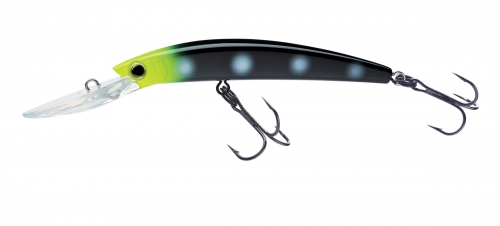
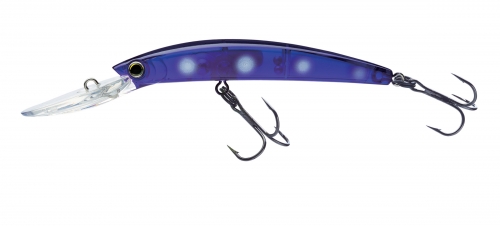
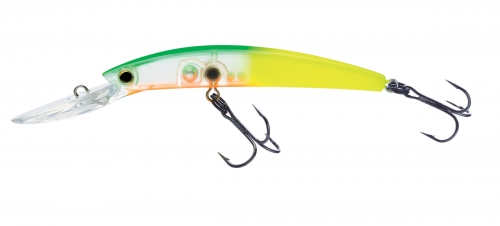
“I use Yo-Zuri SuperBraid 20 pound. I prefer the smaller diameter to help the lure to go to the bottom faster and less restriction. I also tie on a 6 foot Yo-Zuri TopKnot Mainline fluorocarbon leader. My method to the madness is simple: Dark color in cloudy water (Zombie, Midnight) and light color for a sunny day.”
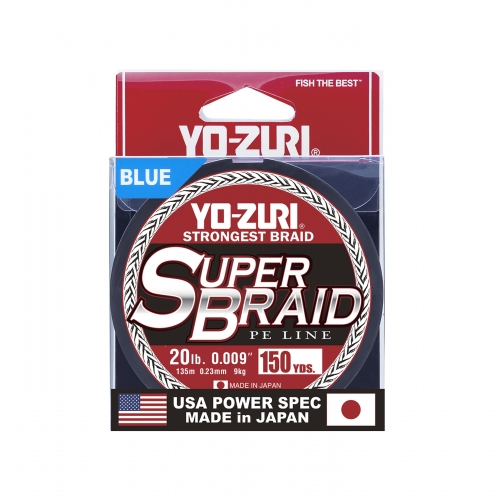

Secondary Technique: Jigging a Rattl’N Vibe
Marc mostly uses conventional jig equipment with a Yo-Zuri Vibe, preferably the 1/2oz size.
“I prefer this technique when fishing around a lot of current. The tight wobble and loud sound of the Vibe seems to really make a difference. I use a 6 foot heavy jigging rod with 10 pound SuperBraid mainline and 8 pound HD Carbon leader.”

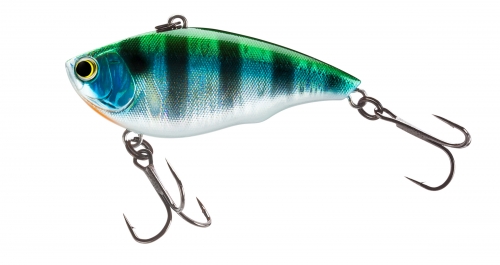
Marc says for the best action to use the bait without a clip and try to fish in areas where there is a discrepancy in the current. Finding a small calm current break can be the most successful. The walleye this time of year again are lazy and would rather find areas in current where the bait will naturally appear in their face without having to chase it down. This also means not being afraid to make multiple casts.
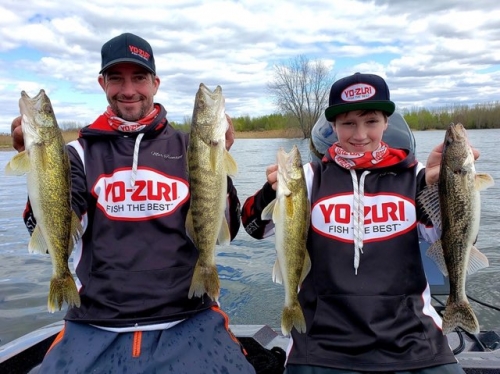
Yo-Zuri Prostaff angler Brandon Cobb Captures his first W
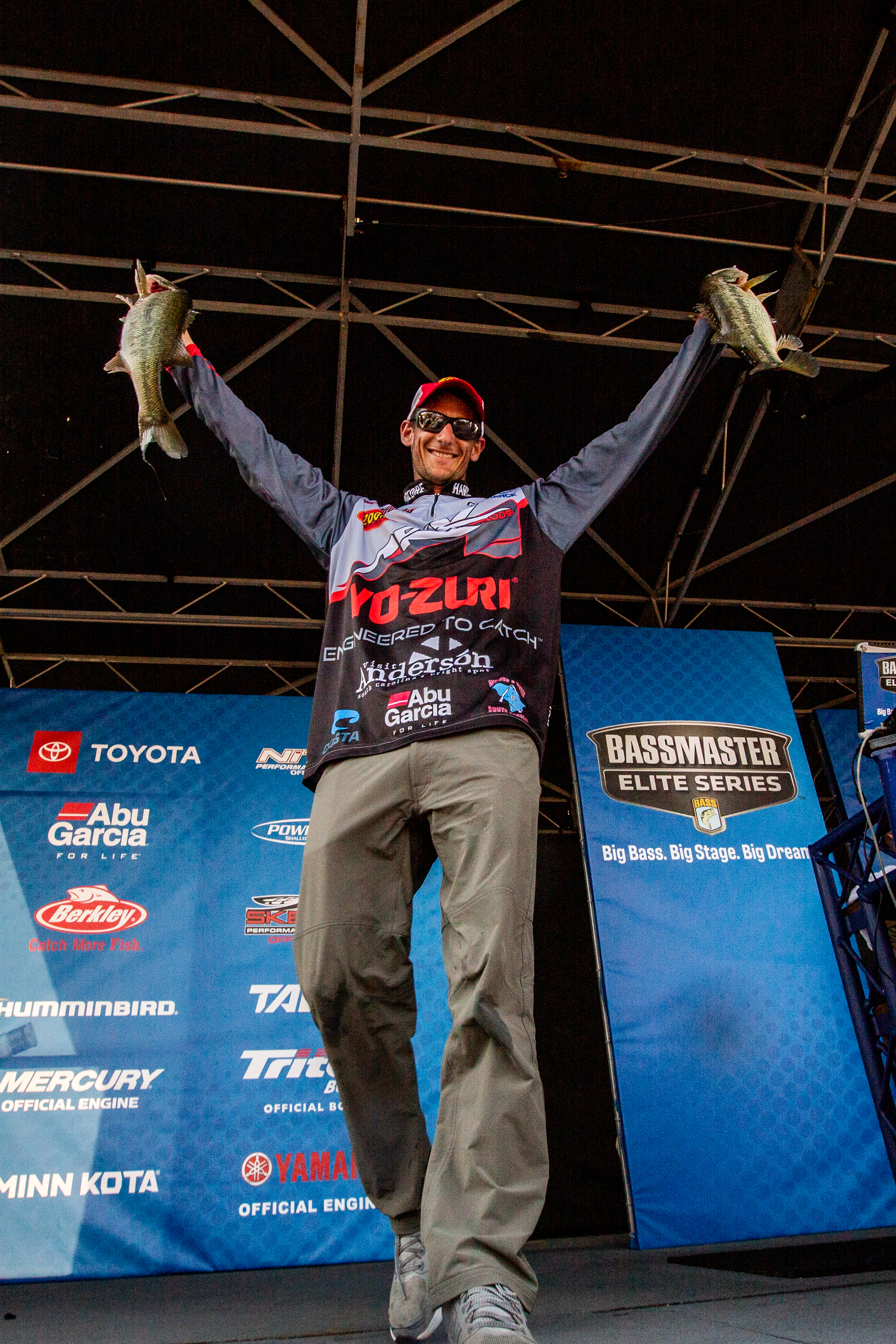 Fishing as a professional bass fisherman comes with a lot at stake. It can be financially trying, emotionally exhausting, physically demanding, but can all pay off when the plan comes together. Every angler out there has one goal in mind; to WIN! But what if you are in front of your hometown crowd? The people that saw you grow-up, the friends you’ve known your whole life, your wife, your parents and grandparents, all your family, what if you were the angler everyone had their eye on through-out the week? Does the stakes of winning get higher? Is there more added stress? Do you expect more from yourself? Well that was exactly the cards dealt to Yo-Zuri Prostaff angler Brandon Cobb last week on Lake Hartwell for the Bassmaster Elites Series event in South Carolina.
Fishing as a professional bass fisherman comes with a lot at stake. It can be financially trying, emotionally exhausting, physically demanding, but can all pay off when the plan comes together. Every angler out there has one goal in mind; to WIN! But what if you are in front of your hometown crowd? The people that saw you grow-up, the friends you’ve known your whole life, your wife, your parents and grandparents, all your family, what if you were the angler everyone had their eye on through-out the week? Does the stakes of winning get higher? Is there more added stress? Do you expect more from yourself? Well that was exactly the cards dealt to Yo-Zuri Prostaff angler Brandon Cobb last week on Lake Hartwell for the Bassmaster Elites Series event in South Carolina.
How did Brandon do? He never even flinched and got the job done; winning his first Bassmaster Elite Series event in his career and taking home a $100,000 payday.
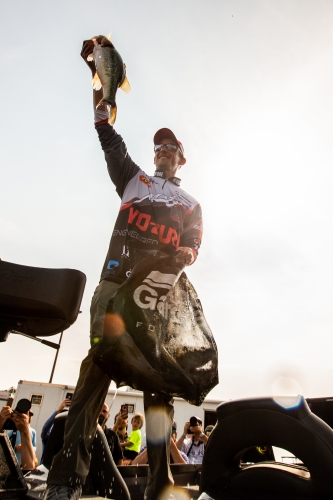
Brandon grew up in South Carolina and has fished Lake Hartwell his whole life, so knowing the lake was no problem. Making sure he didn’t let history interfere with his ability to fish clean and strong to capture the win; that was the difficult task. The Yo-Zuri pro knew he needed to stick to one area of the lake that was notorious for big bedding fish. He stuck to his plan and stayed calm.
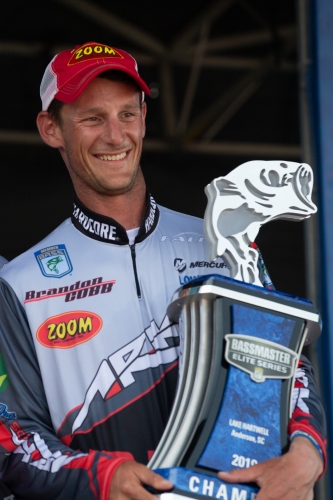
Brandon is a well-known angler that prefers to burn the bank and cover as much water as he could throwing moving baits. But, when the springtime hits and water is clear; the best way to catch them is with a spinning rod. Brandon threw a wacky worm throughout the tournament but still managed to cover as much fishable water as he could, even at times revisiting areas through-out the tournament days as fish continued to move up in his primary areas.
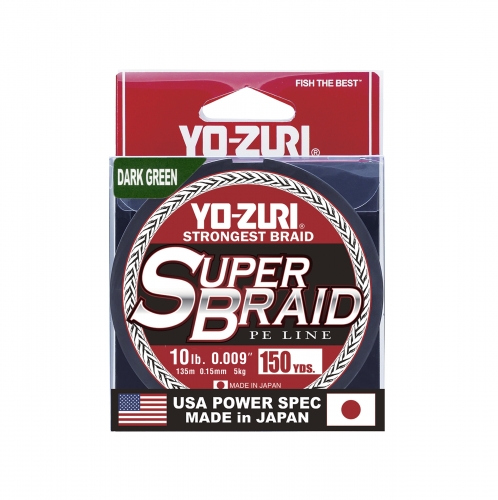
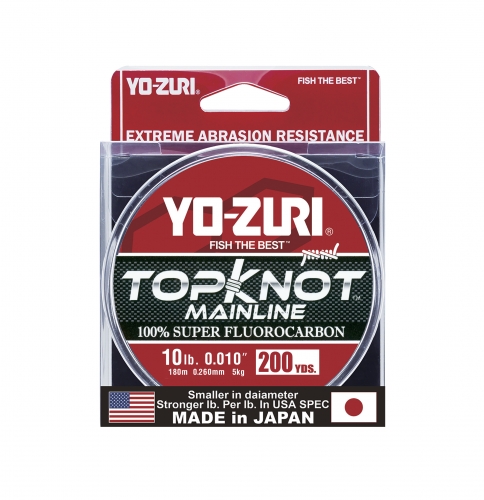
Brandon’s arsenal of attack was a 6’10 medium action spinning rod, 2500 size spinning reel, Yo-Zuri 10lb SuperBraid with a 10lb Yo-Zuri Topknot Fluorocarbon leader. Brandon was using this set up to throw a wacky worm to make long casts and catch cruising largemouth in bedding areas. Occasionally he would slow down and throw a shaky head for fish that were locked onto a bed, but most of the fish he weighed in were cruising shallow.
SHARKS ON THE BEACH!!!!!! –by Chris Bishop
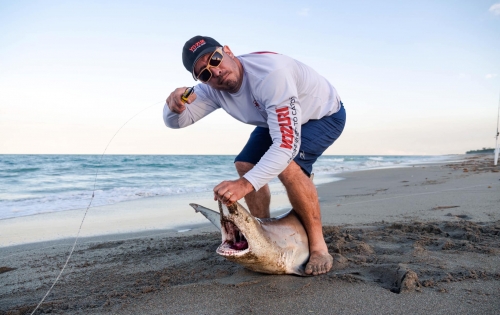
Fishing for sharks anyone? As crazy as this may sound; this is often one of my favorite species to target and the time to target them is now. Now, we are not talking about filming the next episode of JAWS, we are talking about fishing the surf and going after the Black Tips and Spinner Shark species.
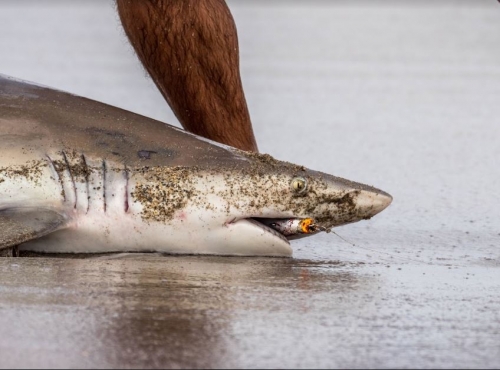
How do you locate sharks that are catchable? Well, remember sharks are predators like most other species of saltwater fish. Therefore, find the bait and you find the sharks. Common bait you want to look for is Bluefish, small Jack Crevalle, Pompano, and Spanish Mackerel. It is not hard to find them because you’ll see the Spinner Sharks jumping out of the water and also busting the top after schools of bait. Overcast weather conditions seem to be the most favored, however sometimes the weather does not make a difference, sharks are hungry no matter what time of day it is. Usually the migration period for the Black Tip Sharks and Spinner Sharks is January through March.
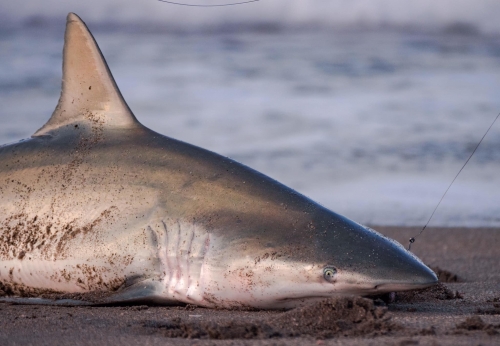
Topwater baits are the guaranteed best bait to throw for feeding sharks. Again, a topwater mimics a wounded bait fish and creates a large water displacement. The sharks will locate the lure based on sound and motion. For the best choice in topwaters; try using the Yo-Zuri Surface Cruiser or Hydro Popper. Common colors to consider are Red Head, Pearl Yellow Pink, Dorado, and Sardine. Also, another important aspect to think about is your rod and reel setup. I would recommend using a spinning reel that can carry up to 300 yards of 50lb Yo-Zuri SuperBraid. A 20-50lb spinning rod is a strong enough rod to fight the sharks and is long enough to increase casting distance from the beach. The most critical component of this operation is the leader. I use 100lb-130lb TopKnot Leader and you want to use a really long leader. There are two reasons for this: sharks will jump and spin wrapping themselves up in the line, sharks have sharp fins and tails that can cut the line if it is too small. Another tip is to replace the treble hooks with inline J hooks; this makes it easier for unhooking the sharks once you reel them to land.


Shark fishing is not something for the faint at heart, however can definitely be something to cross off the bucket list not many anglers get to try. If you’re vacationing in south Florida in the winter months and want to catch a bizarre species not many people attempt look into land-based shark fishing!!!
“Sometimes, you just have to go fishing”- by Bassmaster Elite Series angler Clent Davis
Clent Davis, a native to Alabama and one of the original grassroots anglers to the college fishing program, found himself doing a lot of soul searching leading into the 2018 season. Coming off a couple rough patch years and redirecting his focus to the FLW Tour, he simply “had to just go fishing again.” Fast-forward to August 12th, 2018; Clent’s career took a 360° turn when he posted the biggest come back in FLW history to become the 2018 Forrest Wood Cup Champion. Joined by his wife, daughter, and mom on stage in Hot Springs, Arkansas; Clent looked like a little kid again on the playground without a worry in the world. Fast-forward to February 2019, Clent has accepted a new opportunity with the Bassmaster Elite Series and his accomplishments are still piling up.
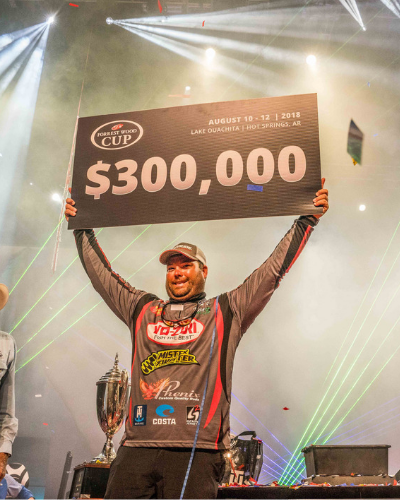
“Coming back to the Elite Series was definitely a decision that was hard to make. With the support of my family, friends, and sponsors I felt like I was making a conscious decision,” says Clent. “The first tournament in Florida kept my reputation in Florida the same ‘terrible’ but coming to Lake Lanier I knew I could put together a great opportunity.”
In practice he found himself struggling again to establish a pattern to go with. Not having a definitive game plan in place, he put 20 rods on the deck and went junk fishing.
“I knew I could catch some fish off docks, and I had some areas I felt confident in. But I couldn’t tell you how I was going to do it or where I was going to finish.”
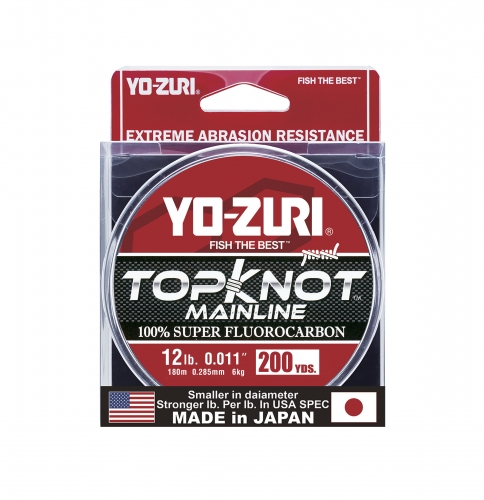
Lake Lanier is a renowned spotted bass fishery, probably on the bucket list of many anglers out there as it should be. Multiple top level tournaments and championships have been held on the lake over the years. It is also where some of the best drop shotting anglers and spotted bass anglers cut their teeth learning everything they did. However, putting a mixture of all the new swimbait and finesse techniques that are popular today; it is almost like taking a knife to a gun fight. But no one out there is going to back down from the challenge, especially Clent Davis.
“Even with all the rods on my deck, I weighed in most of my fish on the Hardcore Flat Minnow 110 and then using a finesse technique. Without a doubt the best technique I had going for me was throwing the jerkbait around docks. I really didn’t think it was going to pan out however, because the weather did not cooperate the way I had hoped.”
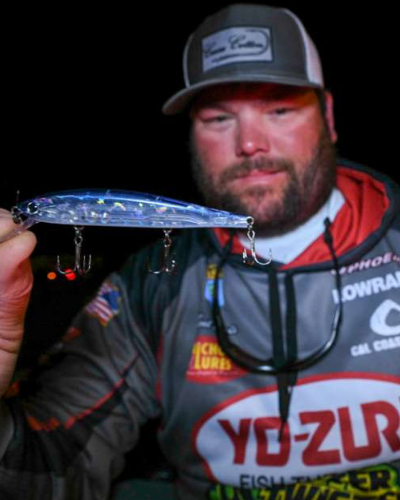
photocredit: Bassmaster.com
The element that played the most into Clent’s favor is consistency. The first day many of the anglers really caught them, but day 2 and into the weekend things changed. Clent was able to stay consistent and put together strong enough weight to post his first Top-10 finish of the 2019 season on the Bassmaster Elite Series. He spent most of his time covering as many docks as he could throughout most of the four days in the tournament throwing the jerkbait. His set up included:
-7’1’’ Phenix Feather ML rod
-6.4:1 Shimano Curado K reel
-12lb Yo-Zuri TopKnot Mainline 100% Fluorocarbon
-Hardcore Flat Minnow 110 (Ghost Pro Blue)
“It feels really good to keep the ball rolling that I got on at the Cup. I spent a lot of time in the off season with my family and in the deer woods. That gave me a break and allowed me to be comfortable going into 2019. I am happy to have gotten my first top-10 early on in the season. Hopefully this will propel me into the remainder and lead me straight into the Bassmaster Classic.”
Late Winter Offshore Mahi Bite Picking Up!!! –Matt George
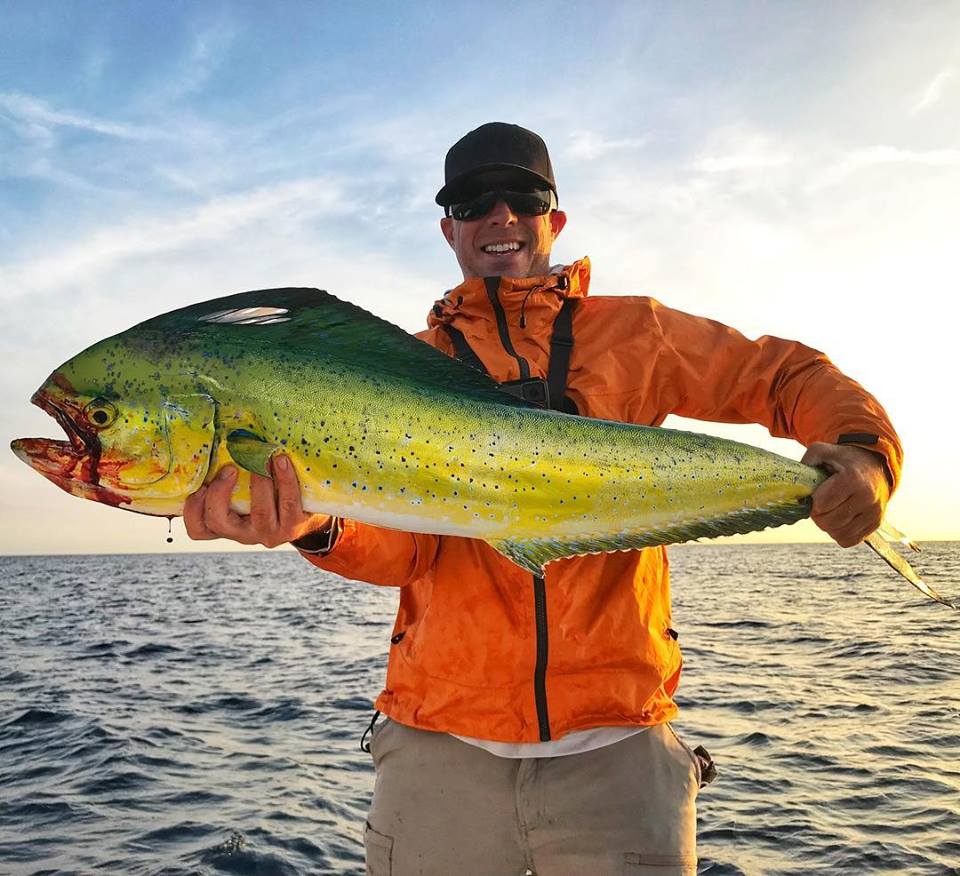 Matt George, one of the craziest but respected personalities to the Yo-Zuri family. Matt grew up in the northeast US, but has called Florida home for several years now. When not traveling for business all over the world, he spends his down time wisely fishing inshore and offshore.
Matt George, one of the craziest but respected personalities to the Yo-Zuri family. Matt grew up in the northeast US, but has called Florida home for several years now. When not traveling for business all over the world, he spends his down time wisely fishing inshore and offshore.
“To me, I don’t care what I am catching as long as I am on the water. But lately the offshore bite has been really picking up. Following a strong pattern lately is turning into more success on the water. Let the birds help you find the bait, let the bait be your GPS, and bring on the exhilarating fight that lies before you.”
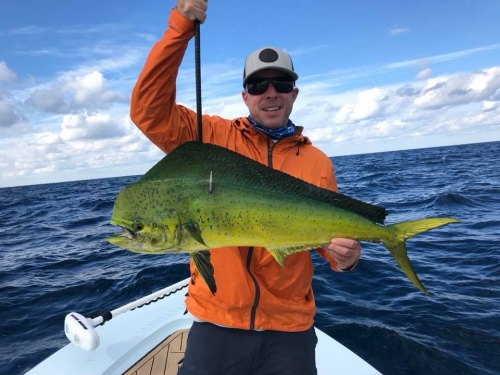
Recently, Matt is spending more time chasing the offshore bite as it is picking up. As winter is coming to a close in south Florida, the bait abundance is increasing and so is the bite.
“Right now I am hitting the water as early as possible and making a 8-12 mile run out. The key depth is anywhere between 100-200 feet. That may seem like a lot, but in your search for lurking Mahi it is easy to eliminate water quickly. Once you find that sweet spot, it is all easy pickings at that point.”
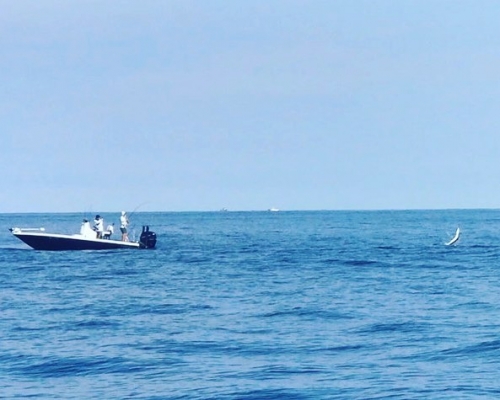
To duplicate what Matt is doing, you have to find the water that will most likely have bait, again Mahi have huge appetites and are predators. Once you find the bait you can find the fish. Along with the right amount of depth, Matt suggests looking for the temperature changes. This little subtlety could be key, but also the any irregularities in the water. Weed lines, cleaner water, dirties water, whatever may appear different out in the ocean could be the ticket. From there just find the bait which is usually accompanied by diving birds.
“The added bonus right now is on top of the Mahi I am catching, I am also finding a mix of Sailfish, again one of favorite species to target. Recent trips I am averaging 3-4 keeper Mahi and about the same number of sails. The days out there have been really fortunate and exciting!”

Matt is using a 2-way approach to targeting his catch. The traditional trolling method and topwater have paid off the best. For the trolling methods, he is rigging live bait on 30lb Yo-Zuri Blue SuperBraid with 30lb TopKnot Fluorocarbon Leader. The topwater he has been using is the Yo-Zuri Hydro Popper on a spinning outfit with the same line and leader. For the popper, Matt emphasizes to always use a loop knot when adjoining your leader to a topwater bait. This always creates the best action on the water.
FLW Tour Lake Toho Top-20 Finish Recap- by Mike Surman
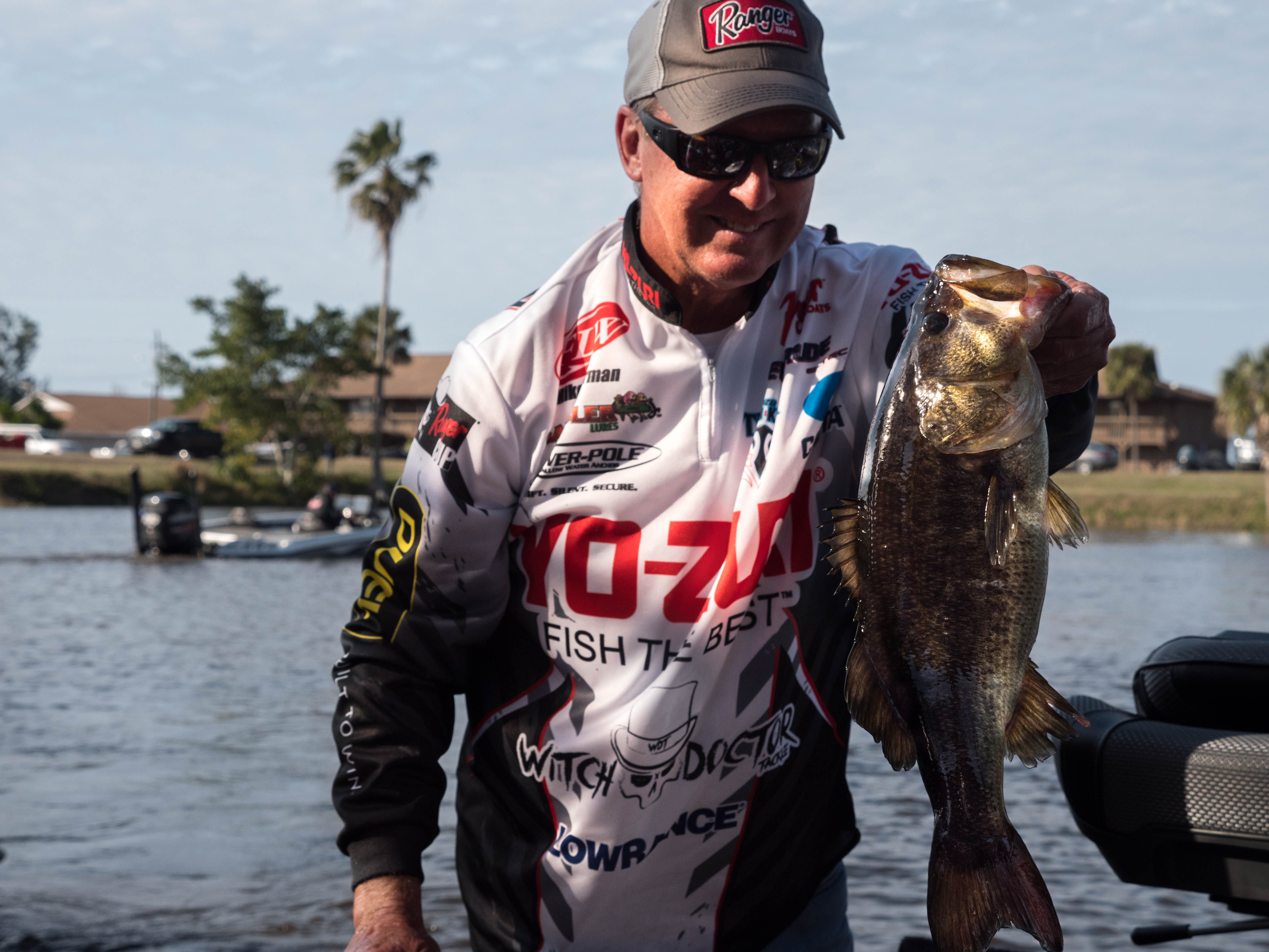 The older I get in this sport the more a good finish means to me. With the changing technology, industry curves, and constant new talent making their way into the tour level; the harder it is for me compete against fellow anglers. However this past weekend in my current home state of Florida at Lake Toho, Mickey Mouse must have given me a little magic being so close to Disney World because everything came together.
The older I get in this sport the more a good finish means to me. With the changing technology, industry curves, and constant new talent making their way into the tour level; the harder it is for me compete against fellow anglers. However this past weekend in my current home state of Florida at Lake Toho, Mickey Mouse must have given me a little magic being so close to Disney World because everything came together.
The fishing in Florida has been really off so far this year. Between the low water in all the lakes, the Red Tide issues the entire state faced last year, and it still being early in the year the best fishing is still yet to come. This last week I was really able to pinpoint a good amount of fish that were pre-spawning and spawning. I used my local knowledge of the lake to lock into Lake Kissimmee and fish staging areas leading into spawning areas with good, healthy grass around it. With water temperatures in the mid-60s I knew as the week processed the fish would continue to move up.
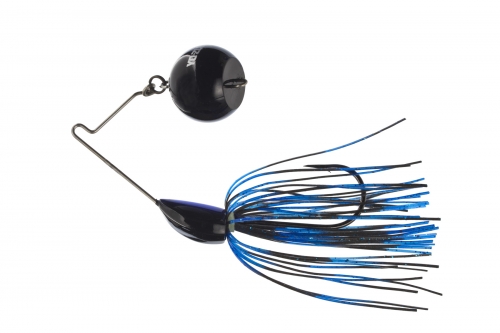
In practice I was really able to capitalize on a morning pattern and then an afternoon pattern, a key to my success knowing I could stay calm throughout the day and capitalize on the different patterns when they were at their best. In the mornings I was catching fishing on a 1/4oz Black and Blue 3DB Knucklebait with a soft plastic swimbait trailer. I was able to catch a couple really good fish on this and thought it would be a key bait for me throughout the tournament. I was throwing the Knucklebait over submerged grass around staging areas. As the afternoon took place and the sun got high I was able to pitch to hydrilla mats and dollar pads with a soft plastic stickworm catching spawning fish.
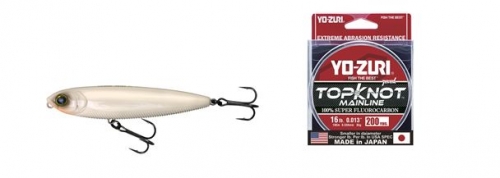
In the tournament, the morning Knucklebait bite had died but I was still able to capitalize catching these same fish using a 3DB Pencil in Bone color. For this technique I was throwing 20lb Yo-Zuri Hybrid line, and I was making short casts with it. I think the bait has better action when making shorter casts and not having so much stretch in the line. In the afternoons I was able to again capitalize again on the plastic stickworm bite. I was fishing the worm on a little [1/16oz] weight and throwing it on 16lb Yo-Zuri TopKnot Mainline Fluorocarbon.
One of the last factors that helped me was covering water in an area. I was fishing a massive area of Lake Kissimmee and it seemed like covering water and then breaking down an area once I got a bite was the key to capitalizing on water holding fish.
